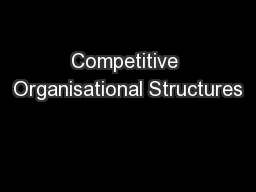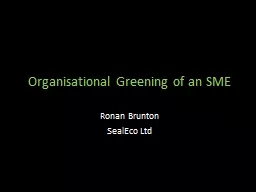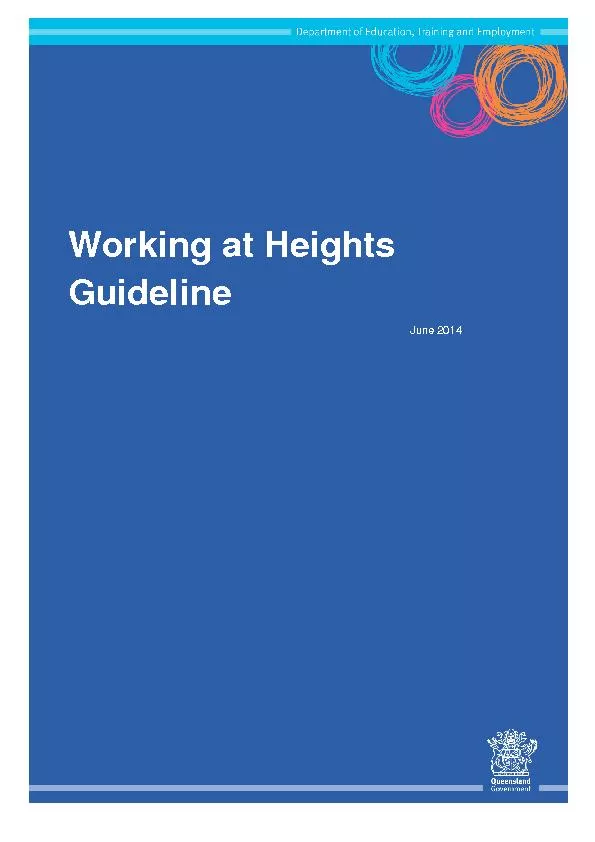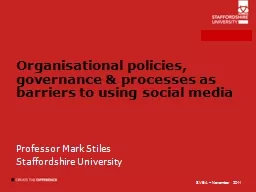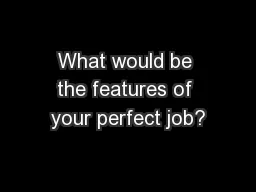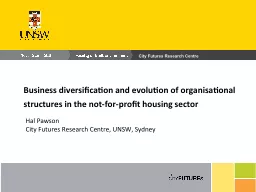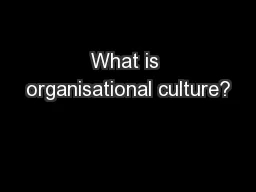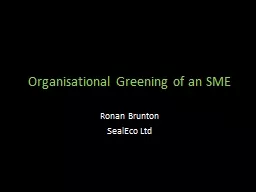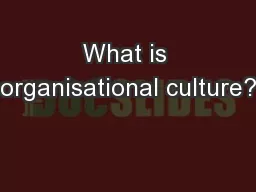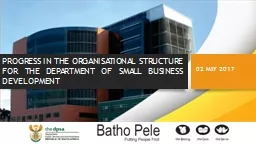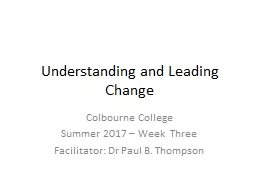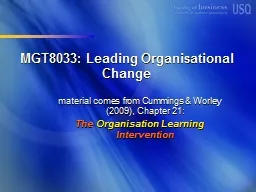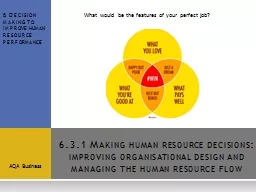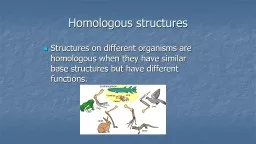PPT-Competitive Organisational Structures
Author : faustina-dinatale | Published Date : 2016-02-29
A2 Business Studies Aims and Objectives Aim Understand methods of increasing competitiveness of organisational structures Objectives Define centralisation and
Presentation Embed Code
Download Presentation
Download Presentation The PPT/PDF document "Competitive Organisational Structures" is the property of its rightful owner. Permission is granted to download and print the materials on this website for personal, non-commercial use only, and to display it on your personal computer provided you do not modify the materials and that you retain all copyright notices contained in the materials. By downloading content from our website, you accept the terms of this agreement.
Competitive Organisational Structures: Transcript
A2 Business Studies Aims and Objectives Aim Understand methods of increasing competitiveness of organisational structures Objectives Define centralisation and decentralisation Explain how to delayer a business. with change?. Introduction. :. The first presentation considers change within a broad context, and adopts a critical perspective on change management.. The second presentation will build upon some of the questions raised in the first presentation and apply change interventions to a practical setting.. Ronan Brunton . SealEco. Ltd. Organisational Greening. of an SME. Part of large construction products manufacturer. Engaged in ‘eco-friendly’ systems for competitive advantage. Realisation that what’s required is a paradigm shift in strategic thinking. Working at Heights Guideline June 2014 Organisational Health Issued: May 2014: V1Department of Education, Training and Employment Uncontr Professor Mark Stiles. Staffordshire University. SVEA – November 2011. What, why and who?. “Social media” covers a wide range of (possibly) in-house and “web 2.0”/”Cloud” tools. The prime purpose of “social media” in personal, business and educational contexts is about the “5 Cs” . Theme 1: . Marketing & People. This theme enables students to understand how businesses identify opportunities and to explore how businesses focus on developing a competitive advantage through interacting with customers. Students develop an understanding of how businesses need to adapt their marketing to operate in a dynamic business environment. This theme also considers people, exploring how businesses recruit, train, organise and motivate employees, as well as the role of enterprising individuals and leaders.. Hal Pawson. City Futures Research Centre, UNSW, Sydney. Presentation overview. Diversification into ‘community services’. Diversification into surplus-generating commercial activities. Innovations in organisational structures. The unwritten code that affects the attitudes and behaviours of staff, approaches to decision making and the leadership style of management. . Identity. Teamwork. Commitment/Retention. Motivation. Orientation as to decision making. Ronan Brunton . SealEco. Ltd. Organisational Greening. of an SME. Part of large construction products manufacturer. Engaged in ‘eco-friendly’ systems for competitive advantage. Realisation that what’s required is a paradigm shift in strategic thinking. The unwritten code that affects the attitudes and behaviours of staff, approaches to decision making and the leadership style of management. . Further definitions: Organisational Culture. “The values and standards shared by people and groups within an organisation”. 02 MAY 2017. PRESENTATION OUTLINE. Purpose. Introduction . Organisational . Design and . the importance . of organisational . structures . Triggers for . Organisational. . Review . Organisational . Design . Colbourne. College. Summer 2017 – Week Three. Facilitator: Dr Paul B. Thompson. Revision and Reinforcement. Model of Organisational Change (Nadler & . Tushman. in . Kreitner. , 1995, p. 498). Change. material . comes from . Cummings & Worley . (. 2009), . Chapter . 21: . The . Organisation Learning . Intervention. Lecture Overview. What is . organisational learning. ?. What are the benefits for businesses that engage in org. . AQA . Business. 6 Decision making to improve human resource performance. What would be the features of your perfect job?. 6.3.1 Making human resource decisions: improving organisational design and managing the human resource flow. Homologous structures. Human Arm . Bat Wing . Whale Flipper. . Analogous. Structures . Similar functions but NOT structurally related. . Insects are arthropods and birds are vertebrates. . The wing of a bird and the wing of a butterfly are examples of .
Download Document
Here is the link to download the presentation.
"Competitive Organisational Structures"The content belongs to its owner. You may download and print it for personal use, without modification, and keep all copyright notices. By downloading, you agree to these terms.
Related Documents

